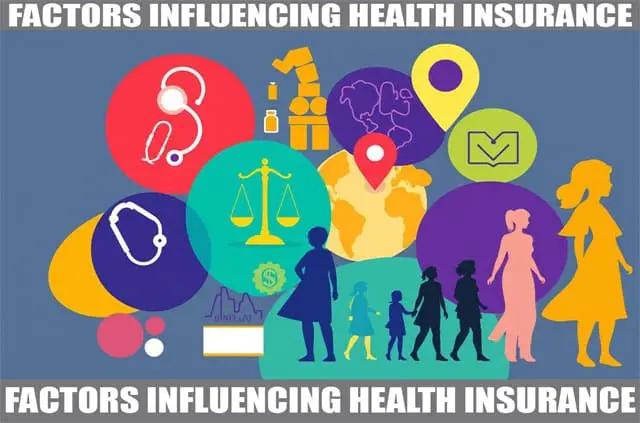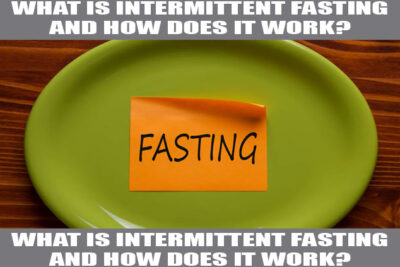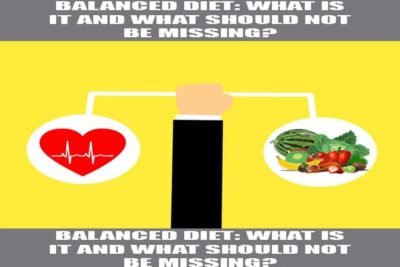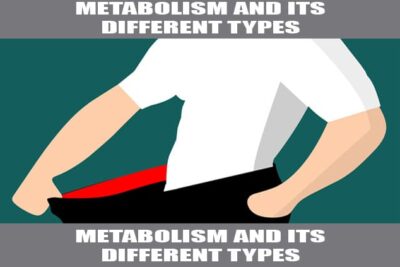
Employee health insurance: what is it? and how it works
Employee health insurance is a key part of an employee benefits package. It helps workers pay for medical costs. Employers usually offer this through employer-sponsored health insurance plans.
These plans make healthcare affordable. They cover doctor visits, prescriptions, and hospital stays. Understanding these plans is crucial for both employees and employers.
These plans work by negotiating rates with insurance companies. They aim to meet the healthcare needs of employees and their families. This ensures everyone has access to the care they need.
In 2023, employees play a big role in their health insurance. They share the cost of premiums. Those with single coverage pay about 17% of the premium. Family coverage costs around 29%.
This shows how important it is for employees to know about their health insurance. They need to understand the benefits and the costs involved.
Understanding Employer-Sponsored Health Insurance
Employer-sponsored health insurance is a key part of what employees get from their jobs. It's chosen and paid for by employers to help employees and their families with healthcare costs. This coverage helps protect against big medical bills and keeps everyone healthy at work.
Definition and Purpose
The main goal of employer-sponsored health insurance is to protect employees from high medical costs. It lets employees get care they might not be able to afford on their own. This improves their lives a lot. Usually, full-time workers get better benefits than part-time ones.
Types of Health Insurance Plans
There are many kinds of health insurance plans offered by employers:
- Health Maintenance Organizations (HMOs): Members must see doctors in the network and focus on staying healthy.
- Preferred Provider Organizations (PPOs): You can see any doctor, but save money by using network providers.
- Exclusive Provider Organizations (EPOs): You can only see doctors in the network, except in emergencies.
- High Deductible Health Plans (HDHPs): These plans have lower monthly costs but higher deductibles. They often come with Health Savings Accounts (HSAs) to help with medical bills.
Each plan is different in what it covers, how much it costs, and who you can see. Knowing about these plans helps employees choose the best one for their health needs.
How Employee Health Insurance Works
Employee health insurance is a team effort between employers and employees. They work together to manage healthcare costs. This partnership is based on cost sharing, where everyone chips in to cover the costs.
Cost Sharing between Employers and Employees
Cost sharing is key in employee health insurance. Employers usually pay a big part of the premiums. Employees pay through their paychecks. This way, everyone feels responsible for their health.
In recent years, employees have paid about 17% for single coverage and 29% for family coverage. This shows how cost sharing works.
Employees also face other costs like copayments and coinsurance. These costs encourage people to take care of their health. At the same time, they help keep costs down for employers.
Payment Structures: Premiums and Deductibles
Premiums and deductibles are the main parts of payment structures in employee health insurance. Premiums are the monthly fees for coverage. Deductibles are the amounts employees pay before insurance starts.
In 2023, the average deductible for single coverage was about $1,735. This shows how important it is to understand these costs.
Knowing about premiums and deductibles helps employees make smart choices about their health. It ensures they can use their benefits wisely.
| Type of Payment | Employee Responsibility (%) | Average Deductible (Single Coverage) |
|---|---|---|
| Premiums | 17% | $1,735 |
| Family Coverage Premiums | 29% | Varies |
Benefits of Employer-Sponsored Plans
Employer-sponsored health insurance offers many benefits for both businesses and employees. It is cost-effective and provides a wide range of coverage options. Companies save money because the cost per person is lower. This makes these plans more affordable.
These plans also give employees access to a large network of healthcare providers. This means employees can get a variety of services.
Group Coverage Advantages
Employers usually cover 70% to 80% of the costs for employee health insurance. A big 80% of workers prefer jobs with health benefits over higher salaries without benefits. This makes group health insurance cheaper than individual plans.
By working together, employers can save a lot of money. In 2022, employers saw a 47% return on investment. They expect this to grow to 52% by 2026.
Tax Benefits for Employees
Employer-sponsored health plans also come with tax benefits. What employers pay for health insurance is tax-deductible. This can lower a company's taxes a lot.
Employees get to pay their part of the premium with pre-tax dollars. This means they pay less in taxes. These benefits make employer-sponsored plans very attractive. They help companies attract and keep the best employees while saving money.
| Aspect | Employer Contribution | Employee Contribution |
|---|---|---|
| Single Coverage | 83% | 17% |
| Family Coverage | 73% | 28% |
| ROI in 2022 | 47% | N/A |
| Expected ROI by 2026 | 52% | N/A |
Factors Influencing Health Insurance Costs
It's important to know what affects health insurance costs. Employer size is a big factor. Big companies can get better deals because they have more people. This means lower costs for everyone.
Employer Size and Negotiating Power
Studies show that how big a company is matters a lot. Big companies get better rates because they spread out the risk. This means lower costs for everyone and more choices for employees.
| Employer Size | Average Premium for Single Coverage | Average Premium for Family Coverage |
|---|---|---|
| Small (1-50 employees) | $9,250 | $23,500 |
| Medium (51-200 employees) | $8,835 | $23,600 |
| Large (201+ employees) | $8,435 | $23,968 |
Location and Age Impacts on Premiums
Where you live also affects your insurance costs. Cities usually have higher costs because of more doctors and hospitals. Age is another big factor, as older people often need more care. Lifestyle choices, like smoking, can also raise costs.

What to Expect from Employer Contributions
It's important for employees to know about employer contributions to health insurance. Employers usually pay a big part of the health insurance costs. They do this in different ways to help employees.
This help makes it easier for employees to get the care they need. It also makes their wallets lighter.
Percentage-Based Contributions
Employers often use a percentage-based system to figure out how much they'll pay for health insurance. For example, in 2023, they covered about 83% of the cost for single plans. This means they paid around $7,034 of the $8,435 annual premium.
For family plans, employers covered about 73% of the cost. This is around $17,393 of the $23,968 total premium. This helps employees pay less out of pocket.
Tiers of Coverage for Employees
Employers offer different coverage levels for various family sizes. They have options for single people, couples, or families. This lets employees pick the best plan for their needs.
About 30% of workers in small to midsize companies get full coverage for single plans. This is more than in big companies, where only 6% of workers get full coverage for single plans.
| Coverage Type | Annual Premium | Employer Contribution | Employee Contribution |
|---|---|---|---|
| Self-Only | $8,435 | $7,034 (83%) | $1,401 (17%) |
| Family | $23,968 | $17,393 (73%) | $6,575 (27%) |
Knowing about employer contributions and coverage tiers helps employees make better choices about their health insurance.
Eligibility Requirements for Employee Health Insurance
The eligibility for health insurance depends on several factors. These include your job status and meeting certain criteria set by your employer. Full-time workers, who put in 30 or more hours a week, usually get health insurance from their employers. Employers must follow the rules of the Affordable Care Act (ACA).
Big employers, with 50 or more full-time workers, must offer health insurance to at least 95% of their staff. If they don't, they face big fines. For example, not providing insurance can cost $2,570 per employee, except for the first 30. If the insurance doesn't meet certain standards, the fine is $3,860 per employee.
Employers must also follow rules about when new employees can start getting insurance. This waiting period can't be longer than 90 days. It's important for small employers to know they don't have to offer health insurance, unless it's in the contract.
Employers must also let employees add their families to their insurance plans. This means spouses and kids up to age 26 can get coverage under the ACA. This shows how important health insurance plans are for employees.
Small businesses can get help through the Small Business Health Options Program (SHOP). They can find affordable health plans. Plus, small businesses can get tax credits for offering insurance, making it easier to meet the employee health insurance requirements.

Weighing Pros and Cons of Employee Health Insurance
Employee health insurance has its good and bad sides. Knowing these can help employees choose the best healthcare for them. It's all about making smart choices.
Advantages of Access to Group Health Plans
One big plus is the cost savings of group health plans. In 2023, the yearly premium for single coverage was $8,435, and $23,968 for families. These prices are higher than in 2020 but still cheaper than individual plans.
Group plans are also easier to sign up for. This makes them a popular choice for many. Plus, small employers may offer tax credits, making insurance more affordable.
Disadvantages: Limited Choices and Potential Loss of Coverage
However, there are downsides to consider. Employees might only have a few plan options from their employer. This can be frustrating, especially if they need specific coverage.
Also, changing jobs can mean losing health insurance. This is a big worry for many workers. In fact, 41% think health coverage shouldn't rely on a job. Employers are starting to see the problem with traditional health insurance too.
Conclusion
Employee health insurance is key to workplace wellness. It gives vital healthcare coverage to employees and their families. With over 70 percent of workers depending on employer health care, it's vital to understand these plans.
The American Rescue Plan Act and the Inflation Reduction Act have made health insurance more affordable and accessible. This shows how important it is for everyone to have access to healthcare.
Employers can use health benefits to attract and keep the best employees. This shows they care about their workers' health. In 2021, companies spent over $6.5 billion on health benefits. This shows how important health insurance is in the job world.
Looking ahead, we must tackle the sustainability concerns of 87 percent of companies. We need to make sure employer-sponsored plans can keep going. By understanding the benefits, costs, and wellness efforts, both sides can make smart choices in the changing health insurance world.
FAQ
What is employee health insurance?
Employee health insurance is a benefit from employers. It helps cover medical costs like doctor visits and prescriptions. It's usually part of employer-sponsored plans.
How does employer-sponsored health insurance work?
Employers pick and buy health insurance for their workers and their families. They work with insurance companies to find a plan that fits everyone's needs.
What are the different types of employer-sponsored health insurance plans?
There are many plans like HMOs, PPOs, EPOs, and HDHPs. Each has its own benefits and how it works.
How do costs work in employee health insurance?
Costs are split between employers and employees. Employees pay part of their premiums from their paychecks. There are also copays and deductibles.
What are the benefits of employer-sponsored health insurance?
These plans offer lower costs and a wider network of doctors. Employers also save on taxes by contributing to premiums.
What factors influence the cost of employee health insurance?
Costs depend on the employer's size and the employees' location and age. Bigger companies often get better rates because they spread the risk.
What are typical employer contributions to health insurance premiums?
Employers usually pay 70-80% of premiums. Employees can choose coverage levels based on their needs.
What are the eligibility requirements for employee health insurance?
You need to be employed full-time and meet a waiting period. Some plans also require a certain amount of time working there.
What are the advantages of group health plans?
Group plans are cheaper and easier to sign up for. They offer better access to healthcare than individual plans.
Are there any disadvantages to employee health insurance?
Drawbacks include fewer plan choices. If you change jobs, you might lose coverage, making it hard to get healthcare.






























Content that may interest you